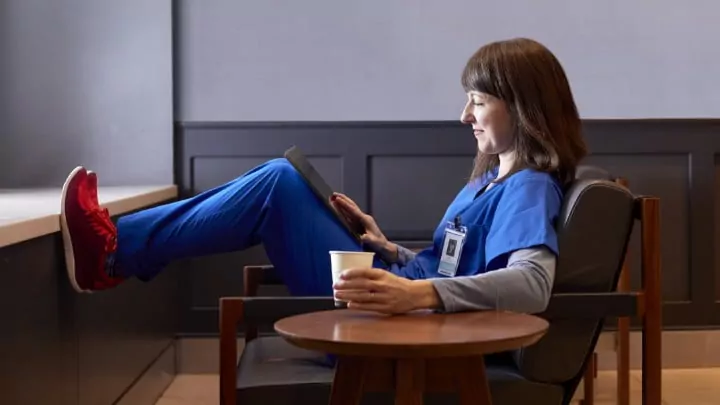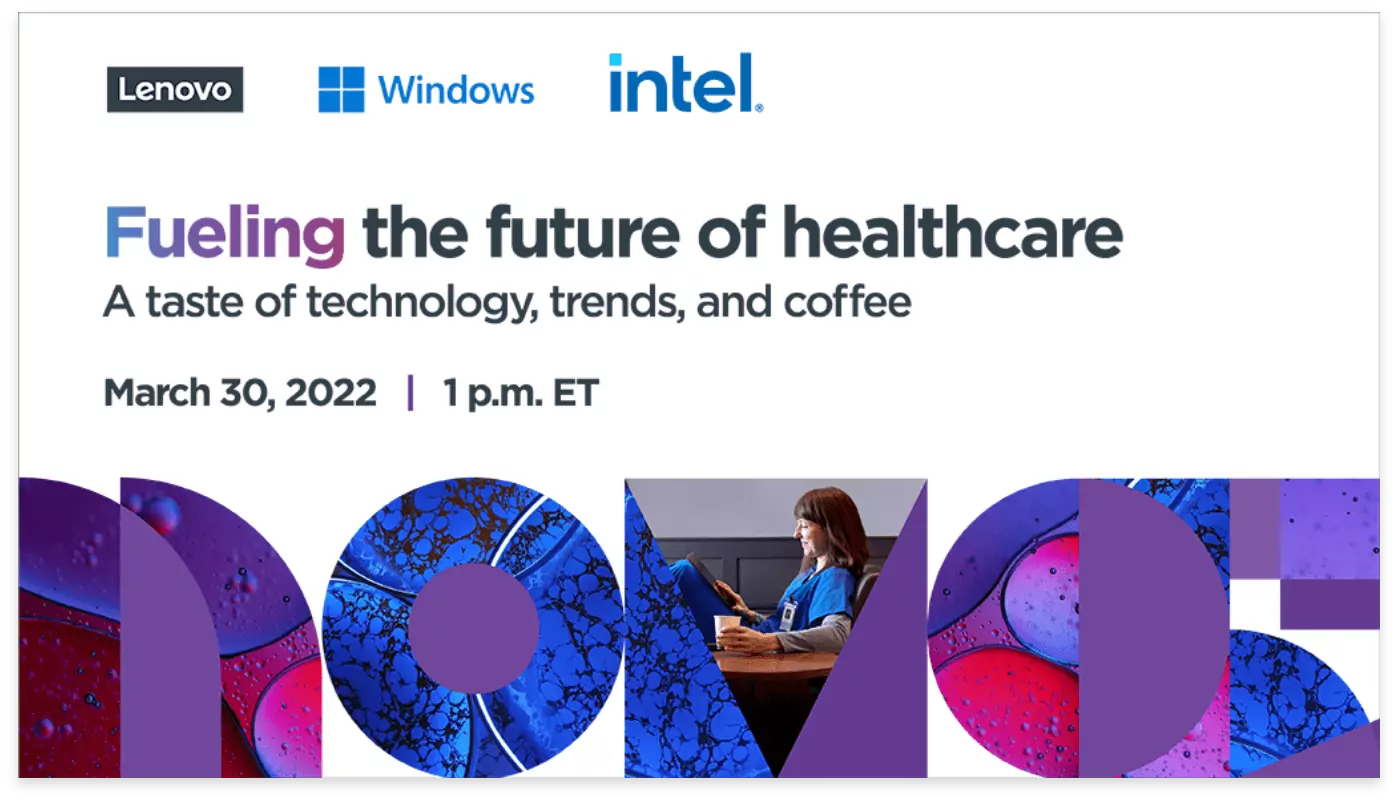Watch our expert-led glimpse into the future of healthcare technology and patient-first trends.
Hear from Lenovo US Global Healthcare Solutions Director Dr. Bob Monteverdi and Lenovo US Global Healthcare Solutions Manager Andy Nieto as they discuss the future of tech in healthcare with a panel of experts:
- Ann Martin, BSN, RN, Global Healthcare Clinical Solutions Specialist, Lenovo US
- Chris Edwards, Chief Customer and Patient Experience Officer, Conversa Health
- Ben Phillips, Director of End User Technology, West Virginia University Medicine
- Thomas Fee, North America Director, Hippo Technologies
Support of this event was provided by Intel® and Microsoft, and additional insights are provided by:
- Aaron Miri, SVP, Chief Digital and Information Officer, Baptist Health
- Will Weider, Chief Information Officer, PeaceHealth
The future of healthcare technology for patients
What positive changes to the patient experience arose from the COVID-19 pandemic? The panel revealed their insights on how you could turn those challenges into opportunities.
“The patient room is becoming where the experience is going to happen,” predicts Ben Phillips. “Because of the pandemic and people not wanting to be in the rooms together, technology is bridging that gap.”
The human touch will be a factor for the foreseeable future as well, especially for older patients. Thomas Fee says, “We’ve got to figure out ways to get more of those healthcare providers…trained to work very closely with the specialists and the physicians at the site of care. That’s going to be the key to helping overcome a lot of the challenges and the frustration that [older] patients are feeling with telehealth.”
The future of technology for healthcare professionals
What technology changes should you make right now? The panel offered a vision for the future and how organizations could fall short of that vision if not prepared.
“The thing that’s going to get all of the tech teams and the innovators really excited [about the virtual health experience] is now moving from a nice-to-have to a need-to-have,” said Chris Edwards.
While that excitement is being generated, Thomas Fee doesn’t want to lose sight of the differences in expectations. “Internists are trying to learn and that’s going to require rounding. Primary care physicians are out in the in public. Then there’s the specialists, who are mainly hospital-based. There are very different expectations for all three of these.”
Another word of caution came from Ben Phillips. “A lot of places fail [when] they don’t do a standardization of the technology they’re using,” Phillips said. “When [patients] go to the ED, they get one experience. When they go to a private physician’s office, they get a different experience.”
Fueling your processes for the future
How do you know if your organization is prepared for the future? Sit back with a cup of Joe and watch as our panel dives deep into the challenges of hybrid care.
- Where is healthcare technology going? Where are investments being targeted?
- What were the four key takeaways from HIMSS 2022?
- How will social determinants affect the Quadruple Aim?
- What is the future model of hybrid care?
- How do we take virtual care to the next level?
- What are the expectations of patients in the virtual healthcare environment?
- What are the expectations of clinicians in the virtual healthcare environment?
Find the answers to these questions and more in this video. And be sure to subscribe to the Lenovo channel on YouTube to always know when new videos are posted.




